Hytera Communications ESW01 Wireless Earset Kit User Manual
Hytera Communications Corporation Ltd. Wireless Earset Kit
User Manual
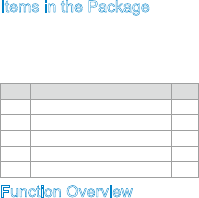
Items in the Package
Please unpack carefully and check that all
items listed below are received. If any item
is missing or damaged, please contact your
dealer.
No. Name Qty.
1 Wireless Earpiece 1
2 Earhook 1
3 Rubber Ear Cushion 3
4Wireless Audio Adapter 1
5 Owner’s Manual 1
Function Overview
This exquisite, easy-wearing and low-
powered wireless earpiece is applicable to
of 5.05 and above.
With Hands-free function, you can have
convenient and safe communication within a
distance of 10 meters from the radio.
You can use the wireless earpiece to
communicate regardless whether the radio
supports BT feature or not.
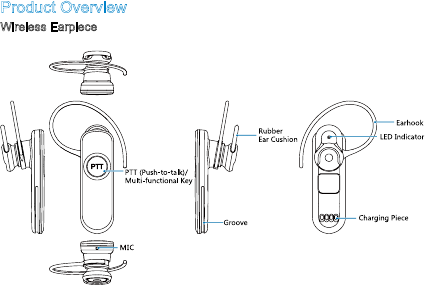
Product Overview
Wireless Earpiece
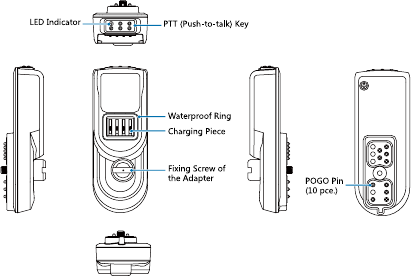
Wireless Audio Adapter
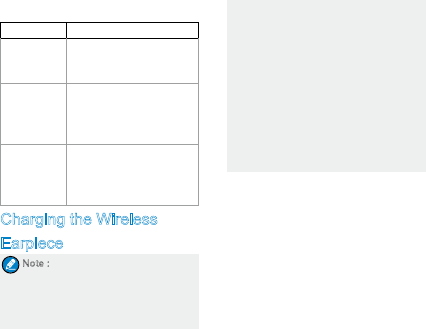
Talk Time >4 hours
D u s t/Wa t e r
P r o t e c t i o n
Class
IP54
Operation
Temperature
Wireless Earpiece: -20C to
+60C
Wireless Audio Adapter:
-25C to +65C
Storage
Temperature
Wireless Earpiece: -40C to
+75C
Wireless Audio Adapter:
-40C to +75C
Charging the Wireless
Earpiece
Note:
To charge the wireless earpiece,
simply connect it to the adapter on
the radio. It is recommended to use
the high-capacity battery specified
by the Company to ensure the
optimal operation duration of the
radio.
Charging the wireless earpiece will
not affect the radio operation.
If the earpiece is idle for a long
time, charge it at least once within
three months.
If the LED indicator does not glow
red while the wireless earpiece is
being charged, charge the earpiece
for 10 to 20 minutes for it to
recover to normal status.
Charge the wireless earpiece before use.
The LED indicator of the wireless earpiece
glows red during charging and glows blue
when the wireless earpiece is fully charged.
Also, the LED indicator indicates the pairing
and connection status. Please refer to LED
Indication for details.
1. Connect the wireless audio adapter to
the radio and secure the screw to fasten
it.
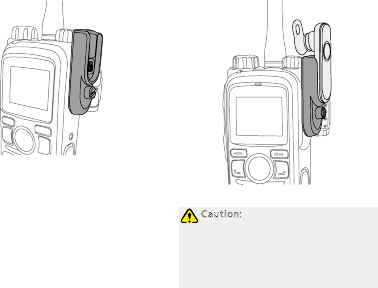
3. Turn on the radio.
Caution: The wireless earpiece can
be charged only when the radio is
powered on. Please ensure the radio is
powered on when charging the radio
(with battery attached) and the wireless
earpiece at the same time.
2. Fix the wireless earpiece into the
wireless audio adapter.
Make sure the wireless earpiece is fully
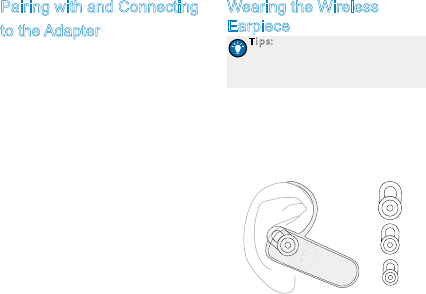
Pairing with and Connecting
to the Adapter
Before initial connection, the wireless
earpiece needs to be paired with the adapter
connect to the adapter without pairing.
1. Disconnect the wireless earpiece from
other devices.
2. Connect the wireless earpiece with
the radio. (See Charging the Wireless
Earpiece for details)
3. Turn on the radio, and the wireless
earpiece will be powered up.
4. The wireless earpiece will be paired
with and connected to the adapter
automatically.
Pairing mode: The LED indicator of the
wireless earpiece/adapter flashes red
and blue alternatively.
Connection status: The LED indicator
is completed.
Wearing the Wireless
Earpiece
Tips: There are three rubber ear
cushions with different sizes provided
with the wireless earpiece for your
comfortable wearing.
Wear the wireless earpiece after the
connection is completed. Adjust the rubber
ear cushion to position it into your ear
canal, and adjust the earhook to secure the
earpiece.
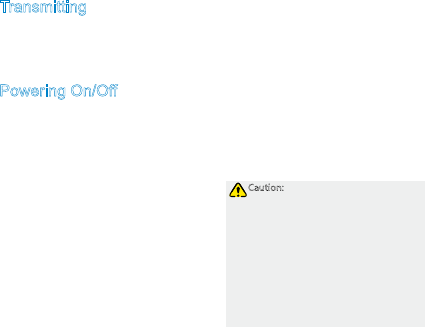
Transmitting
After detaching the wireless earpiece from
the adapter, you can hold down the PTT key
on the wireless earpiece or the PTT key on
the adapter to make a call.
Powering On/Off
The wireless earpiece will give ring indication
(you can hear it only when you are wearing
the wireless earpiece) upon power-on/off.
Powering On
Automatic power-on: When attached
to the radio via the adapter, the
wireless earpiece will be powered on
automatically when the radio is turned
on.
Manual power-on: When the wireless
earpiece is not attached with the
adapter, you can power on the wireless
earpiece by long pressing the PTT key
on it. The adapter can be powered on by
turning on the radio only.
earpiece is powered on. Please refer to LED
Indication for indication details.
Powering Off
To power off the adapter, turn off the radio.
To power off the wireless earpiece, long
press the PTT key after the BT connection is
slowly). The LED indicator goes out when
the wireless earpiece is powered off.
LED Indication
Caution:
When the wireless earpiece is being
charged on the adapter, the LED
indicator glows red when charging
is in process and glows blue
when the wireless earpiece is fully
charged. In this case, the following
indications are not applicable.
You can identify the status of
the wireless earpiece via the LED
indication of the adapter. You can
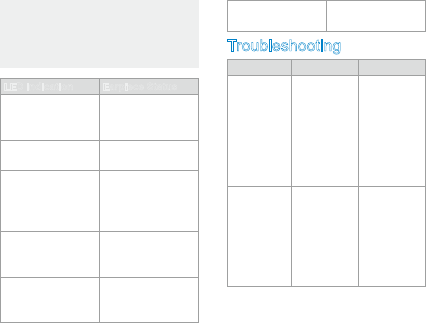
also detach the wireless earpiece
from the adapter to identify the
status of the wireless earpiece.
The following indications do not
include the charging indications.
LED Indication Earpiece Status
The LED indicator
alternatively.
Pairing
The LED Indicator
glows red.
Transmitting
The LED indicator
Low battery power
(applicable to
wireless earpiece
only)
The LED indicator
rapidly.
Connected with no
voice
The LED indicator
rapidly.
Connected with
voice
The LED indicator
Paired but not
connected
Troubleshooting
Phenomena Analysis Solution
The LED
indicator
does not
glow red
while the
wireless
earpiece
is being
charged.
The battery
power of
the wireless
earpiece
may run out
completely.
Charge the
wireless
earpiece
for 10 to 20
minutes.
The wireless
earpiece
cannot pair
with the
adapter.
The wireless
earpiece or
the adapter
may pair
with other BT
devices.
Move away
from other BT
devices and
restart the
radio to pair
the wireless
earpiece with
the adapter.
FCC Stat ement
Changes or modifications not expressly approved by the party responsible for compliance could
void the user’s authority to operate the equipment.
This device complies with part 15 of FCC Rules. Operation is subject to the following two
conditions:
(1) This device may not cause harmful interference, and
(2) This device must accept any interference received, including interference that may
cause undesired operation
Note: This equipment has been tested and found to comply with the limits for a Class B digital
device, pursuant to part 15 of the FCC Rules. These limits are designed to provide reasonable
protection against harmful interference in a residential installation. This equipment generates,
uses and can radiate radio frequency energy and, if not installed and used in accordance with
the instructions, may cause harmful interference to radio communications. However, there is
no guarantee that interference will not occur in a particular installation. If this equipment does
cause harmful interference to radio or television reception, which can be determined by turning
the equipment off and on, the user is encouraged to try to correct the interference by one or
more of the following measures:
—Reorient or relocate the receiving antenna.
—I ncrease the separation between the equipment and receiver.
—Connect the equipment into an outlet on a circuit different from that to which the receiver is
connected.
—Consult the dealer or an experienced radio/ TV technician for help.
This equipment complies with FCC radiation exposure limits set forth for an uncontrolled
environment.
This transmitter must not be co-located or operating in conjunction with any other antenna or
transmitter.
IC statement
This device complies with Industry Canada licence-exempt RSS standard(s). Operation is
subject
to the following two conditions:
(1) This device may not cause interference, and
(2) This device must accept any interference, including interference that may cause
undesired operation of the Device.
The device has been tested and compliance with SAR limits, users can obtain Canadian
information on RF exposure and compliance
Le présent appareil est conforme aux CNR d'Industrie Canada applicables aux appareils
radio exempts de licence. L'exploitation est autorisée aux deux conditions suivantes :
(1) l'appareil nedoit pas produire de brouillage, et
(2) l'utilisateur de l'appareil doit accepter tout brouillage radioélectrique subi, même si le
brouillage est susceptible d'en compromettre le fonctionnement.
Après examen de ce matériel aux conformité aux limites DAS et/ou aux limites d’intensité
de champ RF, les utilisateurs peuvent sur l’exposition aux radiofréquences et la
conformité and compliance d’acquérir les informations correspondantes
Under Industry Canada regulations, this radio transmitter may only operate using an
antenna of a type and maximum (or lesser) gain approved for the transmitter by
Industry Canada. To reduce potential radio interference to other users, the antenna
type and its gain should be so chosen that the equivalent isotropically radiated power
(e.i.r.p.) is not more than that necessary for successful communication.
Conformément à la réglementation d'Industrie Canada, le présent émetteur radio peut
fonctionner avec une antenne d'un type et d'un gain maximal (ou inférieur) approuvé
pour l'émetteur par Industrie Canada. Dans le but de réduire les risques de
brouillage radioélectrique à l'intention des autres utilisateurs, il faut choisir le type
d'antenne et son gain de sorte que la puissance isotrope rayonnée équivalente (p.i.r.e.)
ne dépasse pas l'intensité nécessaire à l'établissement d'une communication
satisfaisante.